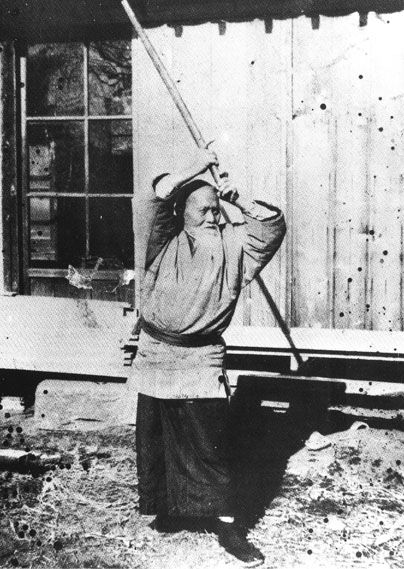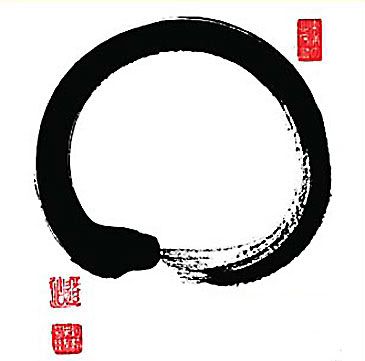Berikut beberapa situs organisasi aikido yang ada di Indonesia.
bagi rekan2 kaskuser yg mau cari info tentang jadwal dojo dan lain-lain. silahken klik dimari..
Alphabetic Order
Ben's Dojo
Institut Aikido Indonesia
Iwama Shin Shin Aiki Shurenkai Indonesia
Keluarga Beladiri Aikido Indonesia
Nishio Aikido Indonesia
Padepokan Aikido Indonesia
Red Aiki Club
Seigi Dojo Aiki
Shudokan Indonesia
Takiotoshi Nagare Budokan
Yayasan Indonesia Aikikai
Buat yg nyari dojo aikido bisa cek dimari juga:
Aikido Journal Dojo Finder
Daftar Alamat Tempat Latihan dan Website Beladiri
yang belum dicantumin silahken PM nubie yak
bagi rekan2 kaskuser yg mau cari info tentang jadwal dojo dan lain-lain. silahken klik dimari..
Alphabetic Order
Ben's Dojo
Institut Aikido Indonesia
Iwama Shin Shin Aiki Shurenkai Indonesia
Keluarga Beladiri Aikido Indonesia
Nishio Aikido Indonesia
Padepokan Aikido Indonesia
Red Aiki Club
Seigi Dojo Aiki
Shudokan Indonesia
Takiotoshi Nagare Budokan
Yayasan Indonesia Aikikai
Buat yg nyari dojo aikido bisa cek dimari juga:
Aikido Journal Dojo Finder
Daftar Alamat Tempat Latihan dan Website Beladiri
yang belum dicantumin silahken PM nubie yak

Upcoming Eventhttp://www.kaskus.co.id/show_post/50...-open-koshukai"]Hitohira Saito Soke Dento Iwama Ryu Aikido Open Koshukai[/URL] 2 - 3 Februari 2013
Late Event
Joe Thambu Shihan Seminar 7th Annual Budo Workshop6 - 7 October 2012
Yoshinobu Irie Shihan Seminar10 - 14 October 2012
Ichiro Shishiya Shihan Seminar6 - 8 July 2012
One Day Bukiwaza Workshop - Frederic Huet Sensei20 May 2012
Phillip Lee Sensei Seminar29 Apr 2012
Seigo Yamaguchi Aikido Style Seminar25 Mar 2012
Ikuhiro Kubota Shihan Seminar10 - 11 Mar 2012
AIKIKAI HIT02-04 Mar 2012
Huet Sensei Bukiwaza Seminar26 Feb 2012
[Event] Hiroshi Fujimaki Shihan Seminar18 - 20 November 2011
[Event] Marcella Paviot Shihan Seminar26 - 30 Oktober 2011
[Event] Seminar Aikido bersama Horii Shihan, Dan 7 di Jakarta- Sabtu, 8 Oktober 2011
[Event]SEMINAR & PUBLIC DEMONSTRATION by AIKIDO SHUDOKAN INDONESIA, 8 & 9 Oct 20118 & 9 Oktober 2011
[EVENT] Nishio Aikido Seminar 2011
Hironobu Yamada Shihan Seminar
Jun Nomoto Shihan Seminar
[EVENT] Seminar
Aikido 2011 bersama Sensei Philip FC Lee (DAN VI AIKIKAI)
[Event] Donovan Waite Shihan Seminar- 10-11 September 2011
Articles:
Chronology of Life of O'Sensei Part 1
Chronology of Life of O'Sensei Part 2
What is Aikido?
Aikido Basic Principles By Koichi Tohei
Aikido Internet Resources
Sensei, Renshi, Kyoshi, Shihan, Doshu
Ebooks & Vids:
Morihiro Saito Sensei -Traditional Aikido Series:
Vol_1_Basic_Techniques
Vol_2_Advanced_Techniques - Morihiro Saito
Vol_3_Applied_Techniques
Vol_4_Vital_Techniques
Vol_5_TrainingWorksWonders
Situs E-books dari ariaenggar
Za - Hiroshi Ikeda Sensei
Aikivideo Blogspot dot com
Chronology of Life of O'Sensei Part 1
Chronology of Life of O'Sensei Part 2
What is Aikido?
Aikido Basic Principles By Koichi Tohei
Aikido Internet Resources
Sensei, Renshi, Kyoshi, Shihan, Doshu
Ebooks & Vids:
Morihiro Saito Sensei -Traditional Aikido Series:
Vol_1_Basic_Techniques
Vol_2_Advanced_Techniques - Morihiro Saito
Vol_3_Applied_Techniques
Vol_4_Vital_Techniques
Vol_5_TrainingWorksWonders
Situs E-books dari ariaenggar
Za - Hiroshi Ikeda Sensei
Aikivideo Blogspot dot com

taken from wikipedia

Spoilerfor "Early Years":
Morihei Ueshiba was born in Tanabe, Wakayama Prefecture, Japan on December 14, 1883.
The only son of Yoroku and Yuki Ueshiba's five children, Morihei was raised in a somewhat privileged setting. His father was a rich landowner who also traded in lumber and fishing and was politically active. Ueshiba was a rather weak, sickly child and bookish in his inclinations. At a young age his father encouraged him to take up sumo wrestling and swimming and entertained him with stories of his great-grandfather Kichiemon who was considered a very strong samurai in his era. The need for such strength was further emphasized when the young Ueshiba witnessed his father being attacked by followers of a competing politician.
Ueshiba is known to have studied several martial arts in his life but he did not train extensively in most and even his training in Yagyū Shingan-ryū was sporadic due to his military service in those years. Records show that he trained in Tenjin Shin'yō-ryū jujutsu under Tozawa Tokusaburō for a short period in 1901 in Tokyo; Gotō-ha Yagyū Shingan-ryū under Nakai Masakatsu from 1903 to 1908 in Sakai, and judo under Kiyoichi Takagi 1911 in Tanabe. However, it was only after moving to the northern island of Hokkaidō in 1912 with his wife, as part of a settlement effort, that his martial art training took on real depth. For it was here that he began his study of Daitō-ryū aiki-jūjutsu under its reviver Takeda Sokaku.
He characterized his early training thus:
“\tAt about the age of 14 or 15. First I learned Tenjin Shin'yō-ryū Jujutsu from Tokusaburo Tozawa Sensei, then Kito-ryu, Yagyu-ryu, Aioi-ryu, Shinkage-ryu, all of those jujutsu forms. However, I thought there might be a true form of budo elsewhere. I tried Hozoin-ryu sojitsu and kendo. But all of these arts are concerned with one-to-one combat forms and they could not satisfy me. So I visited many parts of the country seeking the Way and training, but all in vain. ... I went to many places seeking the true budo. Then, when I was about 30 years old, I settled in Hokkaido. On one occasion, while staying at Hisada Inn in Engaru, Kitami Province, I met a certain Sokaku Takeda Sensei of the Aizu clan. He taught Daito-ryu jujutsu. During the 30 days in which I learned from him I felt something like an inspiration. Later, I invited this teacher to my home and together with 15 or 16 of my employees became a student seeking the essence of budo.
Did you discover aikido while you were learning Daito-ryu under Sokaku Takeda?
No. It would be more accurate to say that Takeda Sensei opened my eyes to budo.
Spoilerfor "Takeda Sokaku and Daitō-ryū":
The technical curriculum of aikido was undoubtedly most greatly influenced by the teachings of Takeda Sokaku and his system of aiki-jūjutsu called Daitō-ryū.
Although disputed by some, the ledger books of Takeda clearly show that Ueshiba spent a great deal of time training in Daitō-ryū between 1915 and 1937. He received the majority of the important scrolls awarded by Takeda at this time including the Hiden Mokuroko, the Hiden Ogi and the Goshin'yo te. Ueshiba received his kyoju dairi certificate, or teaching license, for the system from Takeda in 1922. Takeda had not yet implemented a menkyo license, or highest level of achievement license, into his system at this time. He also received a Kashima Shinden Jikishinkage-ryū sword transmission scroll from Takeda in 1922 in Ayabe. Ueshiba then became a representative of Daitō-ryū, toured with Takeda as a teaching assistant and taught the system to others under the Daitō-ryū name.
The basic techniques of aikido seem to have their basis in teachings from various points in the Daitō-ryū curriculum. A source of confusion is the different names used for these techniques in aikido and in the Daitō-ryū system. In part this is because Takeda Tokimune added much of the nomenclature after the period in which Ueshiba studied. In addition the names ikkajo, nikkajo, sankajo used in both Daitō-ryū and the early years of aikido, latter supplanted by terms such as ikkyo, nikkyo, sankyo, were really generic names translating to "first teaching", "second teaching", and so on.
In Daitō-ryū these usually refer to groupings of techniques while in aikido they usually refer to specific techniques and joint manipulations.
Spoilerfor "From aiki-jūjitsu to aikido":
In the earlier years of his teaching, from the 1920s to the mid 1930s, Ueshiba taught the aiki-jūjutsu system he had earned a license in from Takeda Sokaku. His early students' documents bear the term aiki-jūjutsu.
Indeed, Ueshiba trained one of the future highest grade earners in Daitō-ryū, Takuma Hisa, in the art before Takeda took charge of Hisa's training.
The early form of training under Ueshiba was characterized by the ample use of strikes to vital points (atemi), a larger total curriculum, a greater use of weapons, and a more linear approach to technique than would be found in later forms of aikido. These methods are preserved in the teachings of his early students Kenji Tomiki (who founded the Shodokan Aikido sometimes called Tomiki-ryū
 , Noriaki Inoue (who founded Shin'ei Taidō
, Noriaki Inoue (who founded Shin'ei Taidō , Minoru Mochizuki (who founded Yoseikan Budo), Gozo Shioda (who founded Yoshinkan Aikido) and Morihiro Saito (who preserved his early form of aikido under the Aikikai umbrella sometimes referred to as Iwama-ryū
, Minoru Mochizuki (who founded Yoseikan Budo), Gozo Shioda (who founded Yoshinkan Aikido) and Morihiro Saito (who preserved his early form of aikido under the Aikikai umbrella sometimes referred to as Iwama-ryū . Many of these styles are considered "pre-war styles", although some of the teachers continued to have contact and influence from Ueshiba in the years after the Second World War.
. Many of these styles are considered "pre-war styles", although some of the teachers continued to have contact and influence from Ueshiba in the years after the Second World War.Later, as Ueshiba seemed to slowly grow away from Takeda, he began to implement more changes into the art. These changes are reflected in the differing names with which he referred to his art, first as aiki-jūjutsu, then Ueshiba-ryū, Asahi-ryū, aiki budō, and finally aikido.
As Ueshiba grew older, more skilled, and more spiritual in his outlook, his art also changed and became softer and more circular. Striking techniques became less important and the formal curriculum became simpler. In his own expression of the art there was a greater emphasis on what is referred to as kokyū-nage, or "breath throws" which are soft and blending, utilizing the opponent's movement in order to throw them. Many of these techniques are rooted in the aiki-no-jutsu portions of the Daitō-ryū curriculum rather than the more direct jujutsu style joint-locking techniques.


Tidak ada komentar:
Posting Komentar